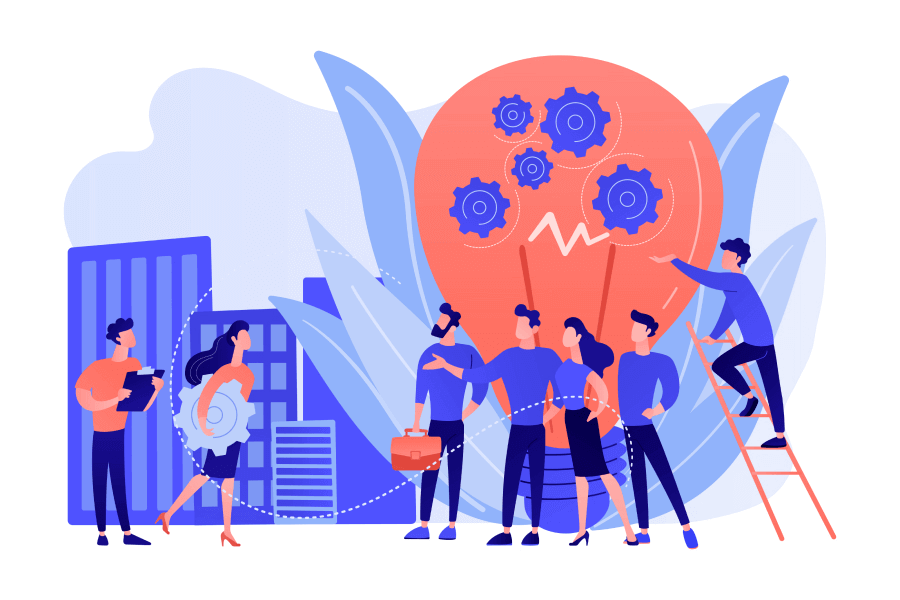Why Leaders Need to be Adaptable While Setting Future Work Policies?

Future work practices like flexible schedules, agile working hours, and telecommuting also need to be considered when addressing future work needs.
The world has moved back to normal and is becoming more dynamic by day. There is no way of predicting the next quick storm that could come up and stir everything. Preparing for the unknown requires careful consideration of every possibility and adapting when things don’t go as planned. Adaptability is a skill many employers look for in an applicant while hiring. It is the tendency to survive in new environments with little to no inconvenience. But like employees, workplaces need to be adaptable as well.
With new changes, there will be new challenges as well. But companies will be able to thrive through them with a flexible & robust workforce. And to create that they will need to tweak their hiring and retention policies and make them future ready.
-
01- Adopt an Agile Mindset:
Since the actual problems are pretty much unknown, the sudden changes need to be dealt with a solution first approach. Only with an agile mindset can leaders craft adaptable policies and respond to any sudden change.
To make agile policies possible, leaders will have to make changes on both strategic and operational level. As far as the strategic part is concerned, there is no harm in always keeping a plan B or plan C handy for any uncertainties. On the operational level, craft employee training policies that can help them become more malleable and multi-skilled.
For example: Back to office is the current challenge most companies are going through. Most employees are questioning the need to go back to the office in the first place. In this circumstance, establishing a hybrid work structure is the best bet companies can go for. However, according to a Microsoft's research report: 38% of hybrid employees say that knowing when and why to come into the office has been their biggest challenge navigating work. Employees may end up leaving the organisation if leaders fail to help them navigate this change. In case if this happens, plan B can be to hire freelancers and contractors as a replacement instead of looking for full time employees again to save cost and time.
-
02- Focus on Remaining Relevant:
Adaptability is about reacting to the market conditions instead of walking opposite the current. The hiring policies are meant to state the benefits a company offers to its employees. If they are crafted keeping in mind the current employee mindset and market trends, they are likely to be more effective. It is important to adapt changes that are future forward. Introducing futuristic policies that are relevant to the market will help leaders attract top talent. Moreover, it also improves the employer brand. This makes it important for leaders to adapt to the changes in their surroundings and tweak their policies with time.
Providing health insurance that covers mental illness, adding sick leaves for mental health concerns, menstrual leaves and significant paternity leaves in the leave policy are some examples.
-
03- Be Open to Change:
While it is impossible to anticipate what is coming next, yet it is important to be ready for the uncertain waves. The difference in how a company surfs through the waves defines its success rate. The best way to ensure a business's adaptability to change is to become a catalyst of change yourself. Leaders can strategize new changes that can be implemented in the hiring policies, to improve the process and distinguish from competitors. Employees as well can be made a part of new plans before any implementation. Ask the employees for their opinion before making any significant changes.
For example: A company has started to feel interviews via video conferencing often end up taking too much time. To save time and effort while hiring, they wish to introduce offline video interviewing in their hiring process. Before implementing, leaders can take a short survey and take their employees’ review on whether they would like to sit for an offline video interview. They can also take feedback on the tool the company is planning to use. Once the feedback is received, leaders can make the changes accordingly.
Employers Need to Go Beyond the Trends
Keeping the current back to office trends in mind, employers are trying to find a middle ground by adopting hybrid work culture. Most companies are asking employees to be present in the office for 3 days and work from home for 2 days. Employees too seem to have accepted this arrangement as of now. But we are not sure about what uncertainties the future has in store for us.
In future, businesses will be using a mix of work and workforce models suiting their requirements. In this case, establishing rigid policies will do more harm than good. HR leaders will end up encountering the same issues they did at the beginning of the pandemic.
Top talent always focuses on the hiring policies and the benefits companies will provide once they join. By keeping the hiring policies adaptable, companies will be able to attract the best talent, today and in the coming years as well.